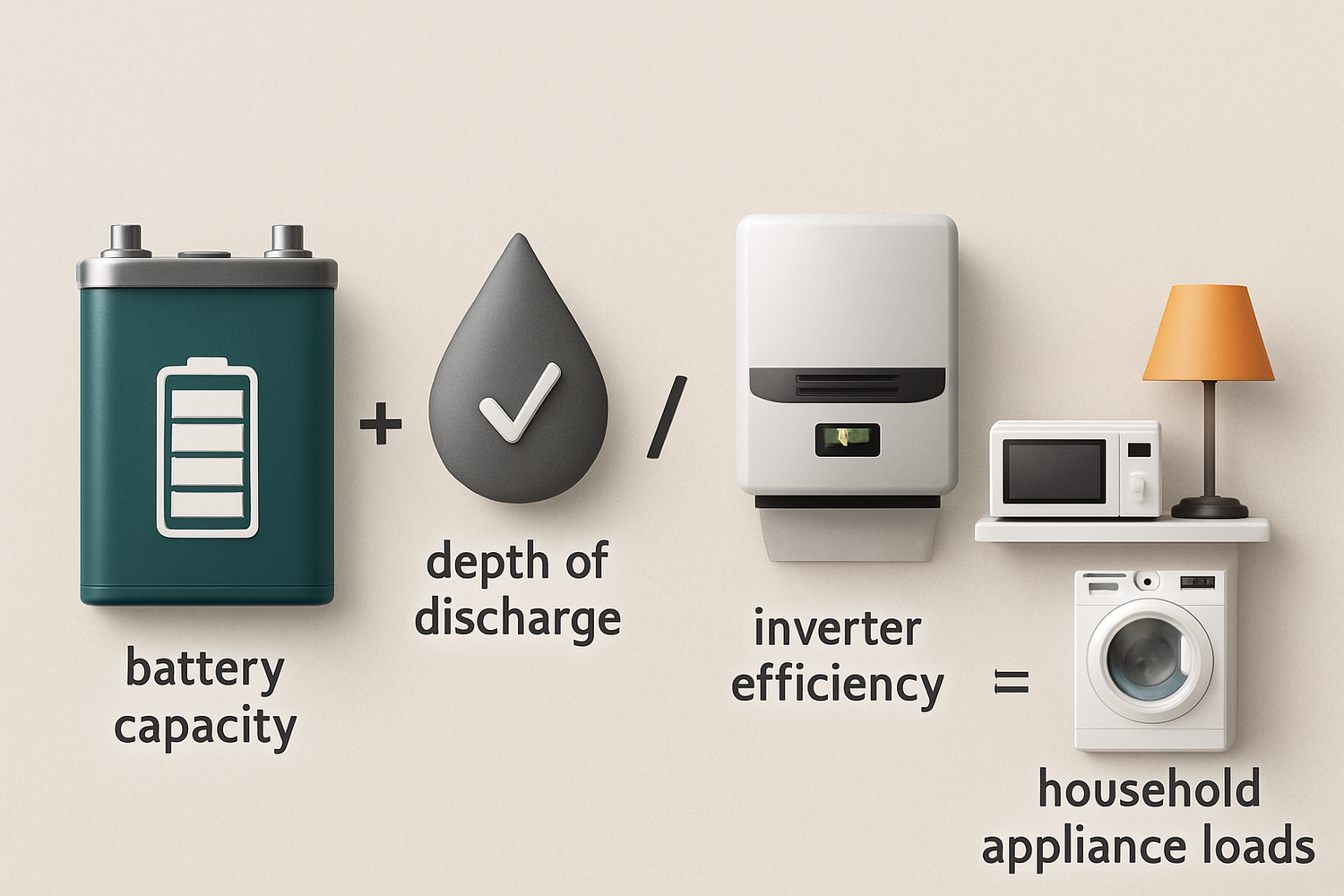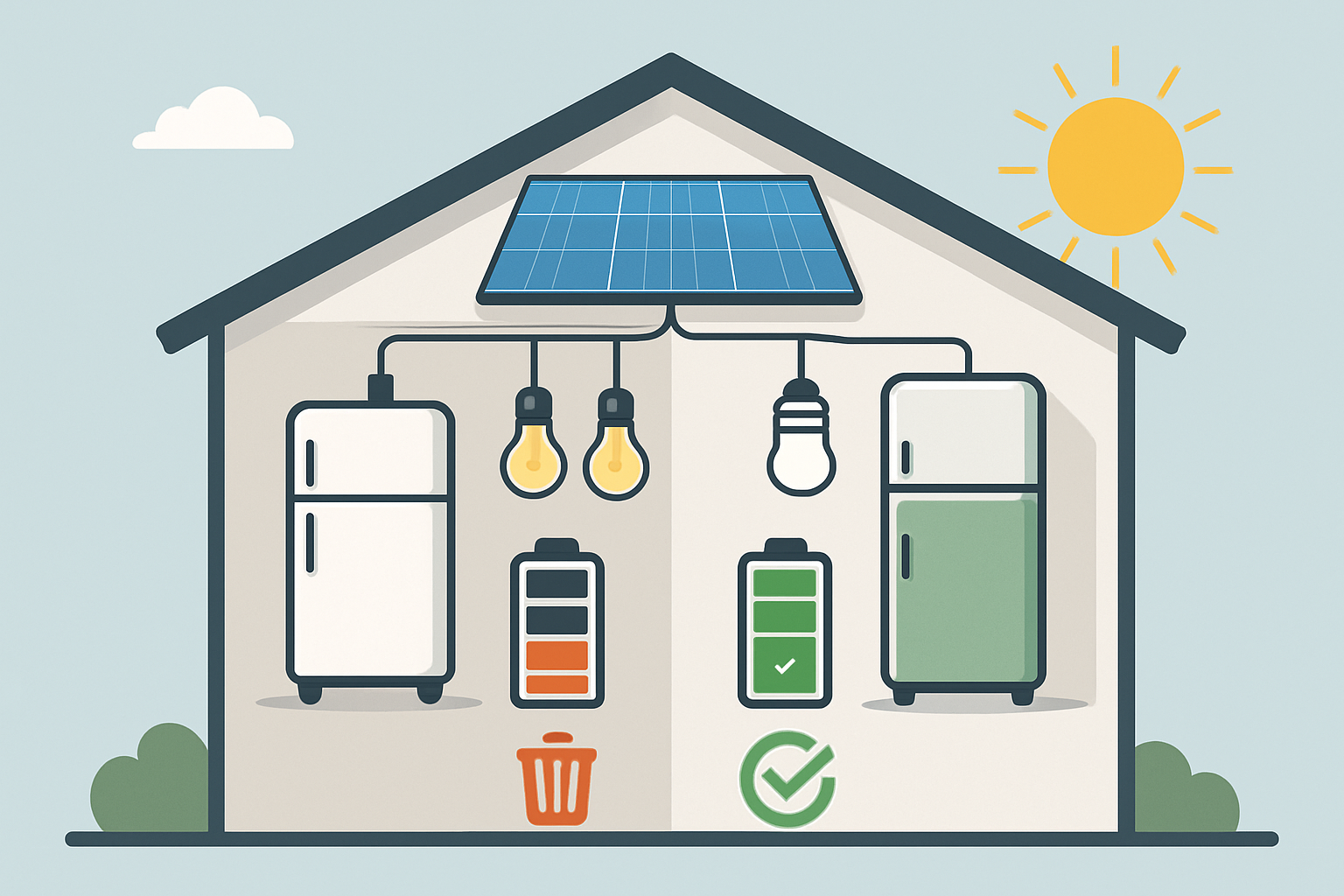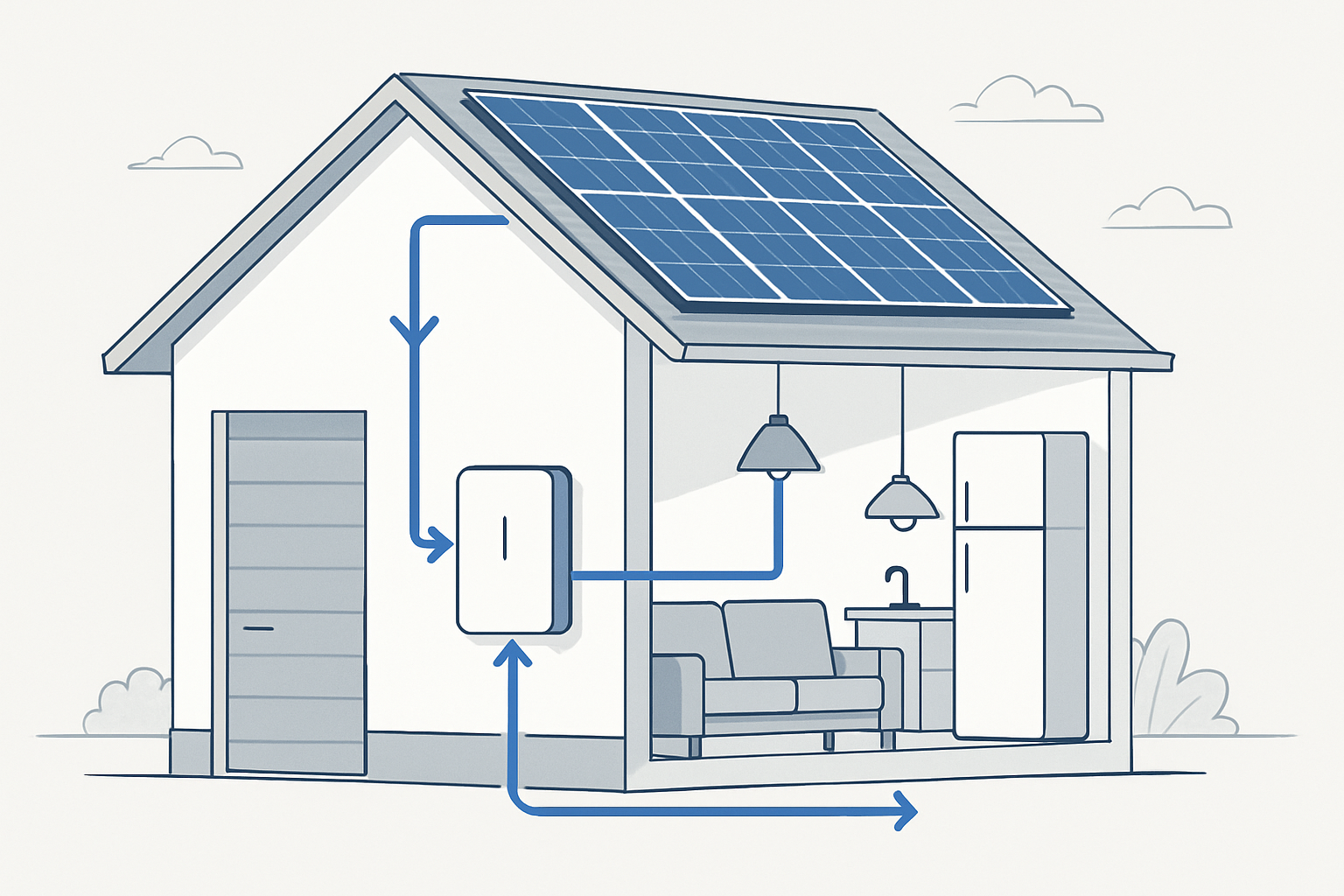When investing in a home energy storage system, one of the most critical questions is about longevity. You want to know how long your battery will reliably power your home. Lithium Iron Phosphate (LiFePO4) batteries are a leading choice for their safety and long life, but their actual lifespan isn't a simple number of years. It's a dynamic interplay of usage, maintenance, and environmental conditions. Understanding these factors is key to estimating your home battery backup duration and ensuring you get the most out of your investment.
Understanding LiFePO4 Battery Lifespan: More Than Just Years
A battery's lifespan is measured in two primary ways: its calendar life and its cycle life. While related, they tell different parts of the story about how long your battery will perform optimally.
Cycle Life vs. Calendar Life
Cycle life refers to the number of full charge and discharge cycles a battery can endure before its capacity significantly degrades—typically to 80% of its original rating. LiFePO4 batteries excel here, often rated for several thousand cycles. Calendar life, on the other hand, is the battery's lifespan over time, regardless of usage. Chemical degradation happens naturally, even when the battery is idle. For LiFePO4 technology, the calendar life can often exceed 10 years under ideal conditions. The actual lifespan of your battery is determined by whichever of these limits—cycles or years—is reached first.
The Role of Depth of Discharge (DoD)
Depth of Discharge (DoD) is the percentage of the battery's capacity that has been used. For example, using 8 kWh from a 10 kWh battery results in an 80% DoD. LiFePO4 batteries can handle deep discharges, often up to 90-100%, without significant damage. However, consistently using a lower DoD—for instance, regularly cycling between 20% and 80% state of charge—can substantially increase the total number of cycles the battery will deliver over its lifetime. Shallower discharges put less stress on the battery's internal components.
Environmental Factors Matter
Temperature is a critical factor that influences battery performance and longevity. LiFePO4 batteries operate best within a moderate temperature range, typically between 20°C and 45°C (68°F to 113°F). Exposing the battery to extreme heat can accelerate chemical degradation and shorten its calendar life. Conversely, charging in freezing temperatures (below 0°C or 32°F) can cause permanent damage. A stable, controlled environment is ideal for maximizing battery health.
Estimating Your Home's Backup Duration
Knowing your battery's theoretical lifespan is one thing; knowing how long it will power your home during an outage is another. This requires a clear understanding of your energy consumption, or 'load'.
Calculating Your Energy Needs (The Load)
Your backup duration depends entirely on what you need to power. Start by identifying your essential appliances. This usually includes a refrigerator, some lights, a Wi-Fi router, and perhaps a medical device. Check the wattage (W) of each device—this is often found on a label on the appliance itself. Add these numbers together to get your total average load. For example:
- Refrigerator: 200W
- LED Lights (5): 50W
- Wi-Fi Router: 10W
- Phone Chargers (2): 20W
- Total Essential Load: 280W
The more devices you run, the higher the load and the shorter the backup duration.
The Battery Runtime Formula
Once you know your load, you can estimate the runtime with a simple formula. This calculation provides a solid estimate of how long your system will last on a single charge. The formula is:
Runtime (hours) = (Battery Capacity (Wh) × DoD × Inverter Efficiency) / Average Load (W)
- Battery Capacity (Wh): The total energy your battery can store, measured in watt-hours. A 10 kWh battery has 10,000 Wh.
- Depth of Discharge (DoD): The percentage of the battery you plan to use. For LiFePO4, this is often 0.9 (90%).
- Inverter Efficiency: The inverter converts the battery's DC power to AC power for your home. Some energy is lost in this process. Most modern inverters are about 95% efficient (0.95).
- Average Load (W): The total wattage of the appliances you are running.
Practical Scenarios: From a Few Hours to a Full Day
Let's apply this formula to a typical 10 kWh LiFePO4 battery to see how the load impacts backup duration.
| Scenario | Average Load | Estimated Backup Duration |
|---|---|---|
| Essentials Only (Fridge, lights, router) | 300 W | ~29.9 hours |
| Moderate Use (Essentials + TV, computer) | 800 W | ~11.2 hours |
| Heavy Use (Moderate use + microwave, coffee maker) | 2000 W | ~4.5 hours |
*Calculations assume a 10,000 Wh battery, 90% DoD, and 95% inverter efficiency.
This table illustrates how quickly runtime decreases as you add more power-hungry devices. Prioritizing critical loads is essential for extending your backup power.
Key Factors Influencing Real-World Performance
The formula provides a great baseline, but other real-world factors can affect your LiFePO4 battery runtime.
Inverter Efficiency
As mentioned, no inverter is 100% efficient; some energy is always lost as heat during the DC-to-AC conversion. Higher-quality inverters typically have better efficiency ratings, which means less wasted energy and slightly longer runtimes for your appliances. This factor is already in the runtime calculation, but it highlights the importance of choosing a quality component for your system.
Phantom Loads and Standby Power
Many modern electronics draw a small amount of power even when they are turned 'off'. This is known as a phantom or standby load. While a single device might only draw a watt or two, the cumulative effect of dozens of devices throughout a home can slowly but surely drain your battery, reducing its effective backup time.
Battery Age and Health (SoH)
Over time, all batteries gradually lose their ability to hold a full charge. This is known as a decline in State of Health (SoH). A five-year-old battery with an SoH of 90% will only store 9 kWh of a nominal 10 kWh capacity. This natural degradation means that your backup duration will slowly decrease over the battery's lifespan. Regular maintenance and smart usage can help slow this process.
Maximizing the Lifespan and Duration of Your LiFePO4 Battery
You can take proactive steps to ensure your home battery performs well for years to come.
Smart Charging and Discharging Practices
While LiFePO4 batteries are resilient, you can extend their life by avoiding extremes. If possible, operate within a 20% to 80% state of charge for daily use. A quality Battery Management System (BMS) is crucial, as it automatically protects the cells from overcharging, over-discharging, and extreme temperatures, which are all detrimental to battery health.
Proper Sizing for Your Needs
Correctly sizing your battery energy storage system is fundamental. An undersized system will be forced to discharge deeply and more frequently, accelerating its aging process. A system that is properly matched to your average load will operate under less stress, leading to a longer and more reliable service life. For a deeper analysis of system components, a comprehensive guide on solar storage performance can offer valuable data and comparisons.
The Importance of a Quality Battery Management System (BMS)
The BMS is the brain of your battery pack. It monitors cell voltage, temperature, and current to ensure everything operates safely within limits. A sophisticated BMS will also perform cell balancing, which ensures all the individual cells in the pack are at an equal state of charge. This prevents certain cells from being over-stressed, which improves both the overall performance and lifespan of the battery system.
A Look Ahead: The Future of Battery Technology
The energy storage landscape is constantly evolving. Research continues to improve battery chemistry for even greater longevity and efficiency. Furthermore, the industry is exploring innovative ways to handle batteries at the end of their initial life. According to a report by the IEA, reusing batteries from electric vehicles for stationary storage is a growing area of interest. As noted in The Role of Critical Minerals in Clean Energy Transitions, this creates a 'second-life' market that could make energy storage more sustainable and affordable. Additionally, smart energy management is becoming more sophisticated. A publication from IRENA, Sector Coupling in Facilitating Integration of Variable Renewable Energy in Cities, highlights how smart systems can optimize battery usage for grid stability and cost savings, further enhancing their value to homeowners.
Putting It All Together
A LiFePO4 home battery's true lifespan is not a fixed number but a result of how it's used. Its longevity is defined by a combination of its inherent cycle and calendar life, which are influenced by factors like Depth of Discharge and operating temperature. To determine your actual home battery backup duration, you must perform a careful load estimation of your essential appliances. By understanding your energy needs and practicing smart battery care, you can ensure your system provides reliable, long-lasting energy independence for many years.
Frequently Asked Questions
How many years can I expect a LiFePO4 home battery to last?
With proper care and under typical operating conditions, a high-quality LiFePO4 home battery can last 10 to 15 years or more. Its ultimate lifespan depends on cycle count, depth of discharge, and environmental factors like temperature.
Can I power my entire house with a single LiFePO4 battery?
It depends on the size of the battery and your home's energy consumption. A single battery can typically power essential loads for an extended period. Powering an entire home, including high-wattage appliances like air conditioners or electric stoves, would require a much larger, multi-battery system.
Does cold weather affect my LiFePO4 battery's runtime?
Yes, cold weather can temporarily reduce a battery's performance and available capacity. More importantly, charging a LiFePO4 battery below freezing (0°C / 32°F) can cause permanent damage. Many systems have a built-in BMS that prevents charging in these conditions.
What is the difference between kWh and kW?
Kilowatt-hours (kWh) and kilowatts (kW) are two distinct measurements. A kW is a unit of power—it measures how much energy an appliance consumes at any given moment. A kWh is a unit of energy—it measures the total amount of power consumed over a period of one hour. Think of kW as speed and kWh as distance. Your battery's capacity is measured in kWh (how much energy it holds), while your home's load is measured in kW (how much power it's drawing).





Leave a comment
All comments are moderated before being published.
This site is protected by hCaptcha and the hCaptcha Privacy Policy and Terms of Service apply.